Experience the wonder and start your journey into Pakistan’s heart and winter charm. Bundle up and brace yourself for an unforgettable winter adventure from snowy landscapes to the warmth of the locals. These destinations showcase the diverse beauty of the country. Owing to the various heights in elevation, Pakistan offers contrasting climates, from scorching deserts to towering Himalayan peaks. As temperatures drop, these spots transform into mesmerizing winter wonderland, and draped in snow. Whether captivated by the icy landscapes or the hospitality, exploring these destinations will give you a newfound appreciation for the cold.
Here is the list of 20 cold places in Pakistan.
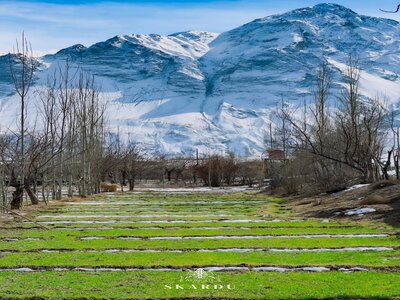
Ranked as the coldest location in Pakistan, Skardu in Gilgit-Baltistan. Known as the Climbers Paradise, it is a popular destination for local and international tourists. Skardu is known for its breathtaking mountains, tranquil lakes, trekking opportunities, and adventurous spots. If you seek an authentic chilly experience, this is the ideal place. With temperatures averaging -10 degrees Celsius, Skardu transforms into a snowy wonderland, perfect for those who appreciate serene landscapes and thrilling adventures. It is a winter sports hotspot featuring skiing, snowboarding, and frozen lakes.
Whether you desire tranquility or excitement, Skardu promises an unforgettable winter experience. Located close to K2, it draws travelers from around the globe and typically maintains temperatures between -10 and -20 degrees Celsius.
Best time to visit: June to September

Murree is a well-loved hill station and ranks second on the list of coldest places in Pakistan. The area is famous for its picturesque scenery and pleasant climate. Tourists flock to Murree year-round. In winter, the entire town is blanketed in snow, creating a peaceful and beautiful landscape. Notable attractions like Mall Road, Pindi Point, and Kashmir Point are must-visit sites in Murree. Murree is the perfect colder place for those seeking adventure, activities such as skiing and snow tubing are available. With its enchanting atmosphere and chilly weather, Murree is a charming destination for anyone looking to escape the heat. For a comfortable and relaxing getaway near all these attractions, book your stay at Fiora Hotel and enjoy the serene beauty of the hills.
Best time to visit: September to November
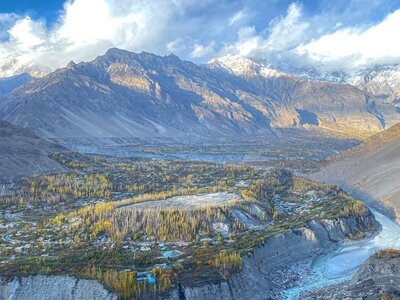
Naltar Valley, a hidden gem among Pakistan’s cold locations, is famous for its stunning beauty and icy scenery. Located near Gilgit, it is a paradise for nature enthusiasts and adventure lovers. During winter, Naltar becomes a snowy haven, captivating visitors with breathtaking views. Snowball fights are a popular activity in this valley, while the vibrant Naltar Lakes enhance the visual appeal. For a chilly retreat filled with awe-inspiring landscapes, Naltar Valley is a must-visit for winter enthusiasts.
Best time to visit: May to October
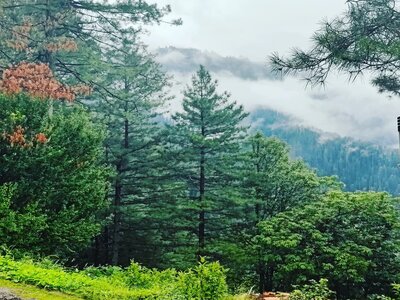
Shogran is an enchanting hill station that offers an ideal combination of tranquility and winter charm. Nestled in the Kaghan Valley, its snow-covered pine forests and panoramic views create a serene escape. Visitors can partake in snow-related activities such as tubing and skiing or simply relish the quiet environment. With temperatures ranging from -5 to 5 degrees Celsius, Shogran’s cold climate and beautiful scenery make it a perfect destination for a cozy winter getaway.
Best time to visit: June to August

Swat often comes to mind when discussing the coldest places in Pakistan. Referred to as the Switzerland of Pakistan, this Khyber Pakhtunkhwa valley becomes a snowy wonderland in winter, surrounded by lush hills and mountains. It is a favorite tourist destination in the north, known for its historical sites, glistening lakes, and charming villages. Winter temperatures drop to around 4 degrees Celsius, making it somewhat chilly yet ideal for exploring the beauty and history of Swat Valley. If you enjoy snowy sceneries and adventures, Swat is the perfect destination.
Best time to visit: October and November
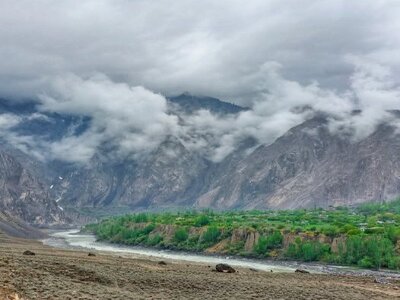
Gilgit is a cool area in Pakistan found within the Himalayas. It features large mountains and pleasantly chilly weather. In winter, Gilgit is blanketed in snow, enhancing its beauty. The Gilgit River flows through the town, adding to its charm. You can enjoy the cold climate, visit historical sites, and discover the rich culture. If you appreciate snow or seek adventure, Gilgit is an excellent winter destination. It’s perfect for those who enjoy serene settings or want to explore something new and exciting.
Best time to visit: May to September
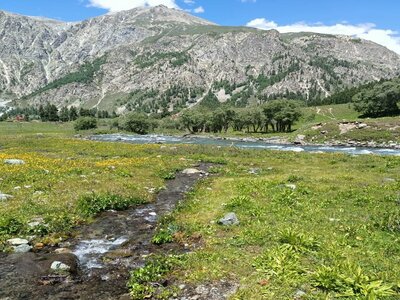
Astore, located in Gilgit-Baltistan, is another chill spot. While not widely recognized, this valley is freezy. It receives significant snowfall, often reaching depths of 2-3 feet, with temperatures dropping to -16 degrees in the winter. Astore has gained popularity in recent years. It’s along the route to Deosai Plains, a vast snowy plateau. Peace seekers and adventure lovers appreciate Astore for its snow trekking, camping, and skiing. So, if you enjoy cold places filled with snow and exciting activities, Astore is an incredible destination to explore.
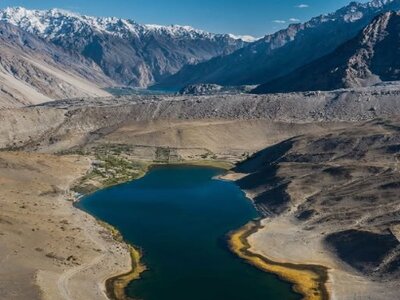
Hunza Valley is like a slice of paradise located in Gilgit-Baltistan. The Himalayas and the Karakoram mountains surround it, enhancing the beauty of Hunza Valley. During winter, temperatures drop significantly, reaching around -11 degrees Celsius, and everything is covered with snow. The fields, ancient forts, and the Hunza River appear even more picturesque when covered in white. Visitors headed towards Hunza for its rich heritage, welcoming locals, and breathtaking scenery. Whether you are a local or a tourist, Hunza Valley is a unique destination that many aspire to visit.
Best time to visit: May to September

Quetta is a remarkable city in Pakistan. It is nestled among mountains and experiences quite cold winters, occasionally witnessing snowfall. Notable attractions like Hanna Lake and Hazarganji Chiltan National Park become favorite spots to explore, particularly in chilly weather. Quetta is home to warm-hearted individuals and a variety of cultures. In winter, temperatures range from 0 to 10 degrees Celsius, occasionally dropping below freezing, especially at the coldest moments. A winter visit allows you to appreciate the city in a different light. It is an intriguing place brimming with exploration opportunities.
Best time to visit: September to February
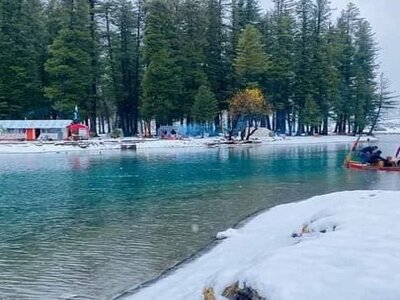
Kalam, located in Swat Valley, is a stunning place in Pakistan. It boasts magnificent mountains and lush green valleys. In winter, everything is cloaked in snow, enhancing its charm. You can explore the enchanting Ushu Forest and a large lake called Mahodand Lake. Kalam is the ideal destination If you appreciate serene environments filled with natural beauty. It’s perfect for leisurely strolls, admiring snowy landscapes, and simply unwinding.
Best time to visit: April to October

Kaghan Valley in Pakistan resembles a breathtaking picture with towering mountains, emerald fields, and flowing streams. The entire area transforms into a snowy wonderland, appearing even more enchanting in winter spells. A well-known spot here is Naran, along with a beautiful lake named Saif-ul-Mulook that many people adore visiting. If you enjoy frolicking in the snow or embarking on wintry adventures, Kaghan Valley is an excellent choice. The cold weather adds to the spectacular views.
Best time to visit: May to September
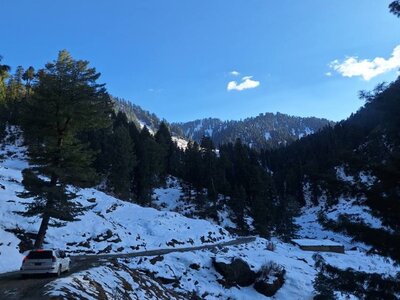
Malam Jabba is a well-known tourist destination celebrated for its gorgeous mountains and exceptional skiing opportunities. Situated in Swat Valley near the Hindu Kush mountains, summer temperatures can reach around 31 degrees Celsius, while winter sees lows around 11 degrees Celsius. You can visit based on your preference for warmer or cooler weather. Malam Jabba is an attractive location for those who love trekking and awe-inspiring mountain views.
Best time to visit: April to October

Chitral is a well-known and delightful region in the northern area of Khyber Pakhtunkhwa, lying alongside the Chitral River. It is the capital of the Chitral District and is recognized as one of the coldest locations in Pakistan. Visitors are fond of Chitral for its captivating culture, warm hospitality, and beautiful traditional attire. With historical roots that trace back to ancient Greece, Chitral possesses a distinctive charm with quaint houses nestled on hillsides, creating a cozy village atmosphere. Chitral is a wonderful destination to explore For those interested in history, culture, and unique places.
Best time to visit: February to December
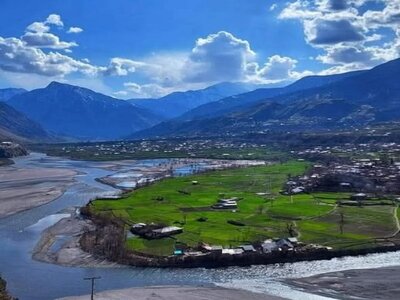
Ayun Valley in Pakistan is a lovely and tranquil area. Located in the Chitral District, it is celebrated for its stunning landscapes, featuring verdant hills and mountains. In winter, the valley is blanketed in snow, transforming it into a magical wonderland. Nature enthusiasts and fans of serene spots find Ayun Valley a delightful visit. It is ideal for a refreshing getaway. Spring and summer are excellent times for those who enjoy greenery, while winter suits those looking for a snowy experience.
Best time to visit: April to November
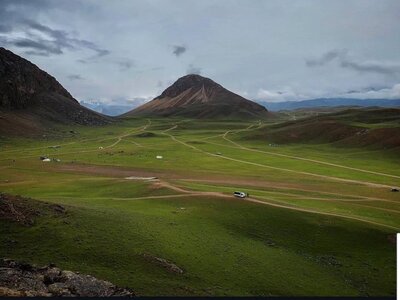
Kalash Valley is among the coldest regions in Pakistan, nestled in Chitral. The valley becomes covered in snow, presenting an inviting landscape with adventure and charm during winter. The area boasts a rich cultural heritage and striking winter views, offering a memorable experience. In the winter months, temperatures can plunge to a brisk -5 degrees Celsius, turning the three remote valleys inhabited by the Kalash community into a winter paradise. It is a realm of frozen beauty and tradition, ensuring Kalash Valley is a captivating spot.
Best time to visit: June to August
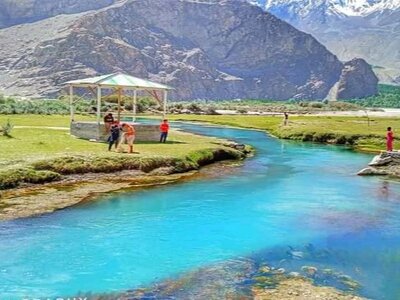
Khaplu is a picturesque town in the Ghanche District of Gilgit-Baltistan, often described as a hidden gem, it is surrounded by snow-capped mountains and lies along the Shyok River. In winter, Khaplu experiences a significant drop in temperature, and the scenery morphs into a snowy wonderland. The historic Khaplu Fort and the beautiful views of the nearby mountains render it a captivating destination for those interested in cultural and natural attractions. The peaceful atmosphere and cold weather make Khaplu an ideal spot for winter visits.
Ziarat is an enchanting hill station in Balochistan, celebrated for its juniper forests and delightful climate. During the winter, Ziarat transforms into a chilly retreat as temperatures drop significantly. A key attraction is the Quaid-e-Azam Residency, where Muhammad Ali Jinnah spent his final days. The nearby hills and woodlands are blanketed in snow, creating a peaceful ambiance. Ziarat offers a distinctive winter experience, providing opportunities for hiking, trekking, and savoring the quiet surroundings.
Best time to visit: Throughout the Year

Phander is a stunning valley situated in the Ghizer District of Gilgit-Baltistan. Phandar Valley is famous for its untouched lake, Phander Lake, encircled by snow-capped peaks. In the winter, the valley receives substantial snowfall, transforming it into a picturesque winter paradise. The frozen lake and snow-laden scenery make Phander an enchanting destination for nature enthusiasts and photographers alike. It serves as a tranquil escape where visitors can relish the beauty of snow-covered landscapes.
Best time to visit: July and August
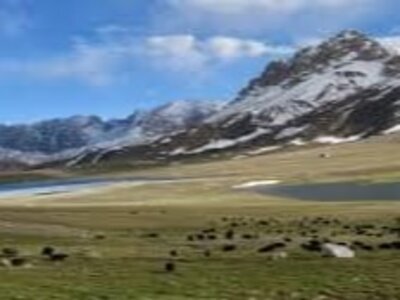
Shimshal Valley is a remote yet breathtaking valley located within the Karakoram Range. Renowned for its towering mountain summits and glaciers, Shimshal becomes both a challenging and gratifying destination in winter. The valley remains draped in snow, presenting an unspoiled and pristine winter scenery. Adventure seekers can traverse snow-covered paths and indulge in the excitement of winter trekking. Shimshal Valley offers a unique winter adventure for those in search of a thrill.
Best time to visit: May to August
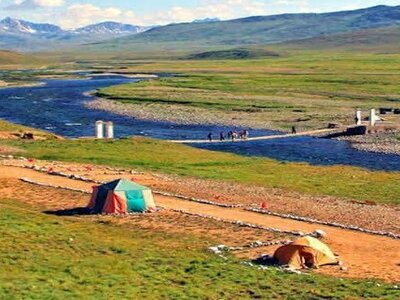
Deosai National Park is a lofty plateau in Gilgit-Baltistan, commonly referred to as the Land of Giants. Deosai experiences frigid temperatures and heavy snowfall. The expansive plains and snow-draped vistas create a dreamlike winter landscape. The park is home to several wildlife, including the Himalayan brown bear. During winter, visitors can partake in snow trekking and admire the splendid sight of the frozen Sheosar Lake. Deosai National Park presents an unparalleled winter experience for those who value the unspoiled beauty of nature.
Best time to visit: June to September
Cold regions in Pakistan invite travelers with their enchanting mix of snowy vistas and cultural richness. From the breathtaking peaks of Skardu to the tranquil valleys of Chitral, these locales offer a winter adventure brimming with natural wonders and warm hospitality. Discover the diverse beauty, and let the chilly areas of Pakistan etch unforgettable memories in your travel journey.
Skardu, Murree, Naltar Valley, Astore Valley, and Deosai National Park are considered among the coldest destinations in Northern Pakistan. These areas in the northern regions, experience low temperatures, particularly during the winter months.
Identifying the best cold location is subjective and varies based on personal preferences. Skardu is frequently viewed as among the top choices due to its stunning landscapes, adventure possibilities, and cultural depth. Other noteworthy destinations like Murree, Hunza Valley, and Swat Valley are unique and coldest destinations for their unique attractions.
Quetta is recognized for having some of the lowest temperatures among cities in Pakistan, particularly in the winter. Situated in Balochistan, the city can experience temperatures below freezing, accompanied by cold weather and occasional snowfall. considered
Pakistan’s Deosai National Park is recognized as one of the coldest tourist spots. At a high elevation, the park endures extreme cold temperatures and heavy snowfall during the winter, offering a distinct and challenging yet awe-inspiring destination for adventure seekers.
